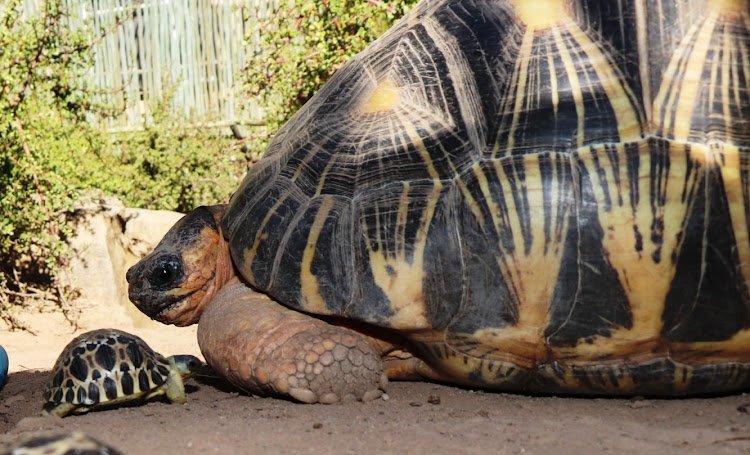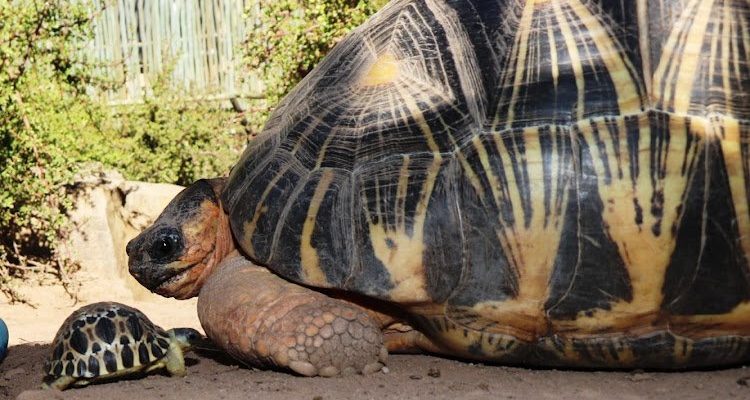
Raising young can be a tricky business in the wild. The environment is full of challenges, from predators to harsh weather. Tortoises, with their hard shells and methodical ways, have developed unique approaches to parenthood. So, grab a cup of coffee, and let’s dive into the world of tortoise parenting. You’ll be surprised at how these ancient reptiles manage to raise their young amidst all the odds!
Parenthood Begins: Finding a Nesting Site
Tortoises typically start their family journey by selecting a perfect nesting site. This careful choice is crucial, as it can significantly affect the survival of the eggs. When a female tortoise is ready to lay her eggs, she looks for a warm, dry spot, ideally with loose soil. Think of it like scouting for a cozy corner in a coffee shop; you want the perfect balance of comfort and safety.
Once she finds a suitable location, she digs a hole using her back legs. This can take a lot of time and energy. The female tortoise often lays about 10 to 30 eggs, depending on her species. After laying the eggs, she covers them back up with soil and leaves the nest. Here’s the thing: unlike many other animals, tortoises don’t stick around to raise their young. Instead, they rely on nature to do the heavy lifting.
Egg Incubation and Development
Here’s where things get interesting. Once the eggs are laid, it’s all about incubation. The eggs need the right temperature and humidity to develop properly, and this is where the environment plays a key role. Tortoise eggs are sensitive to temperature fluctuations; the warmer they are, the faster they develop. This is similar to how a cake bakes in an oven—too hot or too cold, and you don’t get the desired result.
Typically, the incubation period lasts between 60 to 120 days, depending on the species and environmental conditions. During this time, the embryos grow inside their protective shells. As they near hatching, the baby tortoises begin to make sounds, a little like muffled chirping. This can signal to other eggs that it’s time to break free. Isn’t it fascinating how they communicate even before they’re out in the world?
The Moment of Hatching
Eventually, the big day arrives! Hatching is a crucial moment in a tortoise’s life. When the baby tortoises are ready, they use an egg tooth—an interesting little bump on their snouts—to break through the shell. It’s like having a built-in tool for this important job!
Once they’ve hatched, they’re often a bit disoriented and vulnerable. This is where instinct kicks in. The little tortoises immediately start moving toward the nearest water source, often guided by a combination of instinct and the earth’s natural cues, like the position of the sun. It’s a race against time, as predators like birds and rodents are always on the lookout for a quick meal.
The Journey to Independence
As soon as they emerge, baby tortoises face the daunting task of survival. Unlike many animals that receive some form of parental care after birth, tortoises are completely independent from the start. Think about it: they’re basically little armored tanks navigating a dangerous world.
During their early days, they’ll feed on soft grasses and leaves. This not only helps them grow but also equips them with the nutrients they need. Interestingly, some species of tortoises have been known to eat their own shells after hatching. Yes, you read that right! It’s a way to absorb calcium, which is vital for their growth and development.
Predator Awareness and Survival Skills
One of the most critical aspects of a tortoise’s early life is learning to be aware of predators. Baby tortoises are naturally cautious, and their hard shells provide some protection. However, they must also rely on stealth and camouflage. They often bury themselves in the sand or hide among leaves to avoid detection.
It’s important to note that many hatchlings don’t survive their first year due to predation and environmental challenges. Only a fraction will make it to adulthood. This harsh reality is a reminder of how tough life can be in the wild, even for these resilient creatures.
The Role of Environment in Tortoise Survival
The environment plays a massive role in how well tortoise hatchlings thrive. Factors such as climate, food availability, and habitat destruction can directly impact their survival rates. For instance, in areas where the rain is scarce, finding food and water can be particularly challenging for young tortoises.
Additionally, human activity poses significant threats to tortoise populations worldwide. From urban development to poaching, many tortoise species are endangered. Conservation efforts are crucial to protect their habitats and ensure that future generations can continue to be part of our ecosystems.
So, there you have it! Tortoises might seem slow and simple, but their journey to adulthood is fraught with challenges and remarkable strategies. From choosing the right nesting site to developing survival skills, these little creatures truly embody resilience.
The next time you see a tortoise, remember the incredible story behind it. They may not have traditional parenting methods, but their survival instincts are finely tuned to thrive in the wild. As we continue to learn about these fascinating animals, let’s also commit ourselves to protecting their habitats so they can keep raising future generations. After all, every little turtle counts!

